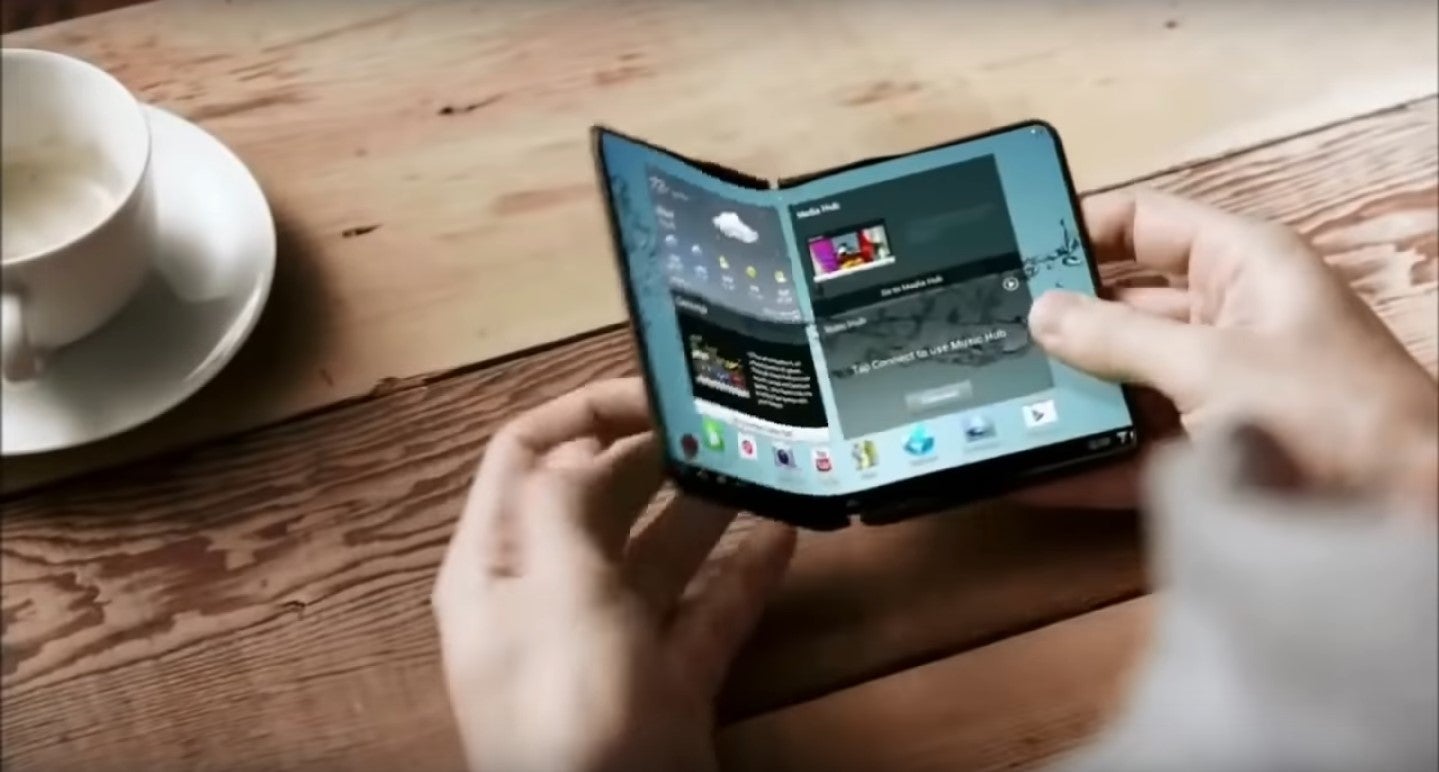
With global smartphone sales failing to grow for the first time, partially due to a slowdown in innovation, smartphone manufacturers are looking to new technologies to attract customers.
An example of this is the foldable phone, with Samsung leading the charge in this area. Samsung Galaxy Fold, which features a screen that unfolds like a book to create a 7.3-inch tablet screen, was unveiled at Samsung Unpacked in February, and was set to become the first commercially available foldable phone.
With the phone’s somewhat bulky design receiving a mixed reception, the launch of one of the first folding phones has still received some interest from early adopters.
However, the rollout of the Galaxy Fold has faced a significant hurdle.
The Galaxy Fold has been delayed
After a limited number of phones were distributed to reviewers to test before the release date, some journalist reported that they encountered problems with the screen, with some taking to Twitter to complain of the phone bulging, flickering or part of the screen breaking altogether.
As a result, Samsung has announced that the Samsung Galaxy Fold’s launch, which was due to take place in the US in just three days, will be delayed so that the company can “run further internal tests”.
How well do you really know your competitors?
Access the most comprehensive Company Profiles on the market, powered by GlobalData. Save hours of research. Gain competitive edge.

Thank you!
Your download email will arrive shortly
Not ready to buy yet? Download a free sample
We are confident about the unique quality of our Company Profiles. However, we want you to make the most beneficial decision for your business, so we offer a free sample that you can download by submitting the below form
By GlobalDataThe company has attributed the problems to the “impact on the top and bottom exposed areas of the hinge” and that there was “also an instance where substances found inside the device affected the display performance.” The company will now work to discover “how the device needs further improvements that could ensure the best possible user experience”.
The Korean tech giant has said that a new release date for the phone will be announced “in the coming weeks”.
“Foldable design innovation triggered much skepticism”
Emma Mohr-McClune, Service Director at GlobalData, believes that the foldable design has some significant vulnerabilities:
“So far, we’ve seen around half a dozen different ways to make smartphones fold, and in my opinion, not one of these pioneer models look rugged enough for public presentation or sale at this time.
“This new foldable design innovation triggered much skepticism from the industry analyst community, from the outset.
“The problem is, that in innovating on the basic ‘chocolate-bar’ format of the standard smartphone, original equipment manufacturers (OEMs) have introduced new design vulnerabilities, and that has some significant implications for device lifecycle cost and management.
“Given the anticipated high retail cost of this new design innovation, the device insurance market should certainly be worried about these initial reports.”
Could this delay the adoption of folding phones?
What may seem like an embarrassing setback for Samsung, especially after the discontinuation of the infamous exploding Galaxy Note 7, may not have a lasting impact on the foldable phone market, which is still at its very early stages.
Despite the buzz at Mobile World Congress and several companies due to release foldable phones, with Huawei’s Mate X due to be launched later this year, many are skeptical over their design. Fragile folding mechanisms, issues with the display, battery life and the fact that content designed to work on foldable screens has not caught up yet all remain an issue.
Many have predicted that foldable phones have a way to go before they reach the mass smartphone market. Gartner’s research director Roberta Cozza believes that foldable phones will remain a “niche product” due to “manufacturing challenges”.
According to analysis by Gartner, foldable phones will only make up about 5% of the market over the next five years. With a £1800 pricetag, Samsung’s foldable phones will be out of reach for most phone owners. It looks likely that many will wait until more affordable options are available.
Furthermore, what Samsung’s delay indicates is that there are still some major design issues to iron out in the emerging technology before foldable phones become mainstream.
Therefore, companies such as Apple, who appear to be waiting before exploring this area themselves, may be making a wise decision by delaying their entry into this area, allowing early innovators to make the mistakes first.




